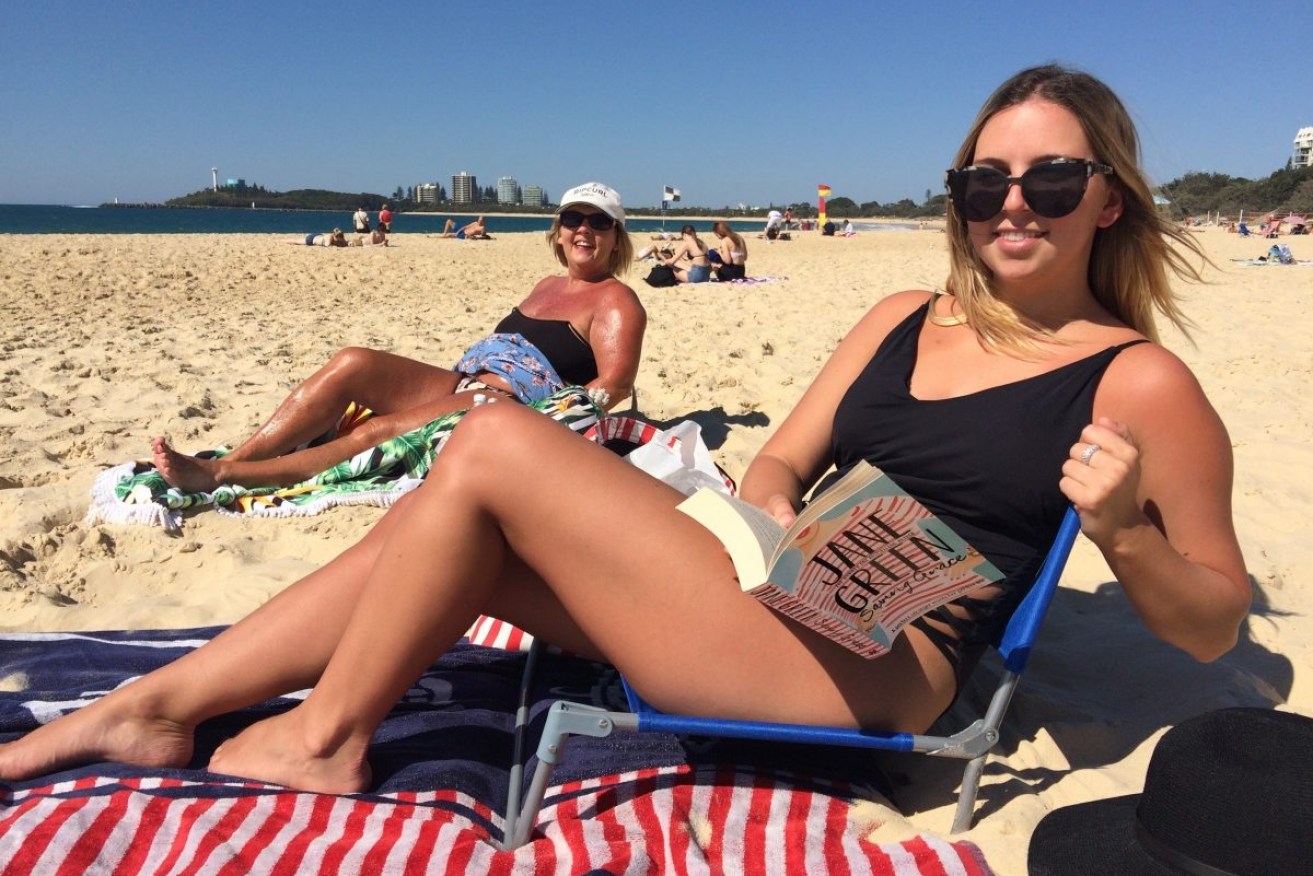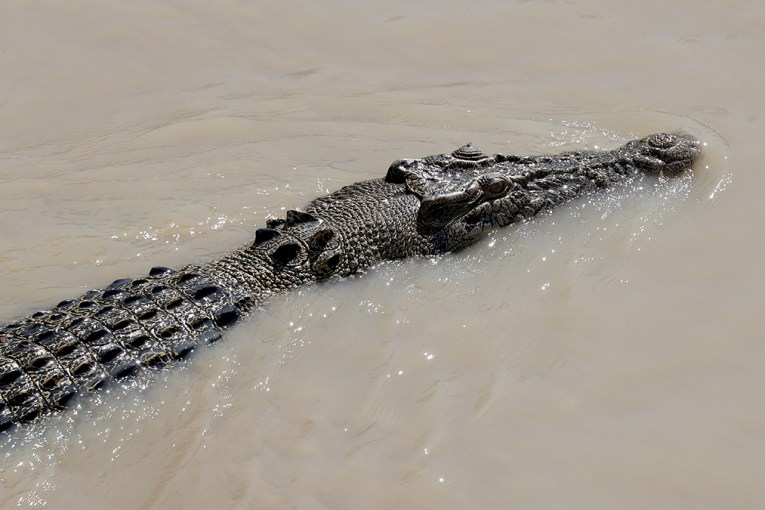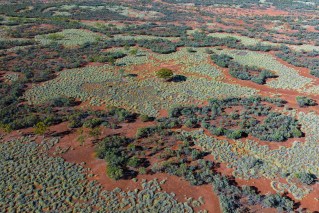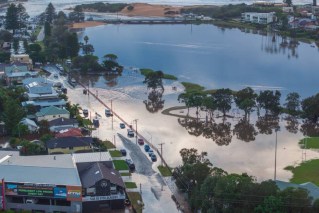What winter? Queensland beaches warmed by climate change

Victorian tourists Lucy and Narelle O’Connor enjoy Queensland’s winter sunshine on Mooloolaba Beach. Photo: Kat Donaghey
Beachgoers are basking in ‘global warming’ sunshine that has turned Queensland’s winter into one of the best times of the year to lie on the sand.
Winter tourism is on the rise in the Sunshine State’s popular south-east corner, which is experiencing the highest increase in winter temperatures in Australia.
The weather bureau says a combination of climate change and weather patterns has produced “abnormally warm winter temperatures” in south-east Queensland.
“Overall there is a warming trend with winter average daytime temperatures,” Bureau of Meteorology climatologist Robert Smalley said.
“All of Australia is getting warm, but it’s more pronounced in south-east Queensland.”
Mr Smalley said global warning and a lack of rain-bearing systems in central Australia impacting the eastern states were at play.
“No one seasonal temperature could be solely attributed to global warming but it is on the back of a long-term trend.”
Some parts of Brisbane and the Gold Coast experienced their record highest July mean daily maximum temperature, including the Gold Coast Seaway (22.3 degrees) and Coolangatta (21.9 degrees).
Maximum daytime temps this week (August 12 – 17) have also topped out in the high 20s in Brisbane, Sunshine and Gold Coasts, combined with crisp blue skies, bearable UV and mild sea breezes.
Winter UV rates in south-east Queensland are “moderate” and about three times less than summer’s “extremes”.
The predominant wind in winter, in particular July, is from the west, meaning beachgoers are protected from the cold breeze and can enjoy warm sunshine without the chill.
And the chances of rainfall ruining a winter beach holiday are also significantly reduced, with about 25 fewer days of rain in winter than summer.
Such conditions were enough to entice Victorian mother and daughter Lucy and Narelle O’Connor to sprawl out on Mooloolaba Beach on the Sunshine Coast and work on their tans.
The contented duo basked in the midday sun on reclining chairs, congratulating their decision to escape the Victorian chill.
“Today is like a summer day for us; it’s 26 degrees and back home in Horsham it’s 10 degrees,” said Narelle, 57.
“I’m not sweating but it’s warm and there’s a nice breeze.”
Added 21-year-old student Lucy: “We have been working on our tan absolutely and I can see the difference over the last five days – the tan is progressing.
“If this was summer, I’d be burnt to a crisp.”
Tourism operators say the secret is out, and visitors are discovering what Gold and Sunshine Coast residents have long known – you can still strip down to a bikini in June, July and August.
June accommodation occupancy was up one per cent on the same time last year in Queensland, according to the Queensland Events and Tourism Monthly Accommodation Report.
Tourism leaders expect the next quarterly tourism figures to confirm anecdotal reports of more fly ins from the cold southern states of Victoria and New South Wales.
Destination Gold Coast’s Dean Gould said this winter was the strongest the tourism industry had experienced in a long time, with more and more southerners escaping the cold metropolitan cities for a “blast of sunshine”.
“We are seeing a growing awareness of Queensland and the Gold Coast offering a year-round appeal – not just in summer,” Mr Gould said.
“We have seen a lot coming to the Gold Coast from Sydney and experiencing our warm winter and going back happy.”
Visit Sunshine Coast director Bill Darby said while Queenslanders constituted the bulk of visitors to the two coasts, there were also more travellers crossing the ditch from New Zealand.
“A lot of New Zealanders want to escape the New Zealand winters because it is bitterly cold and winter in Queensland tends to be better value – and they love value,” said Mr Darby, adding that accommodation prices were as much as 30 per cent lower than summer.
Mr Darby said winter offered the benefits of no humidity, mosquitos or flies and a sun with a lot less sting.
“The seasonality of visiting the coast has had its edges smoothed off.”








